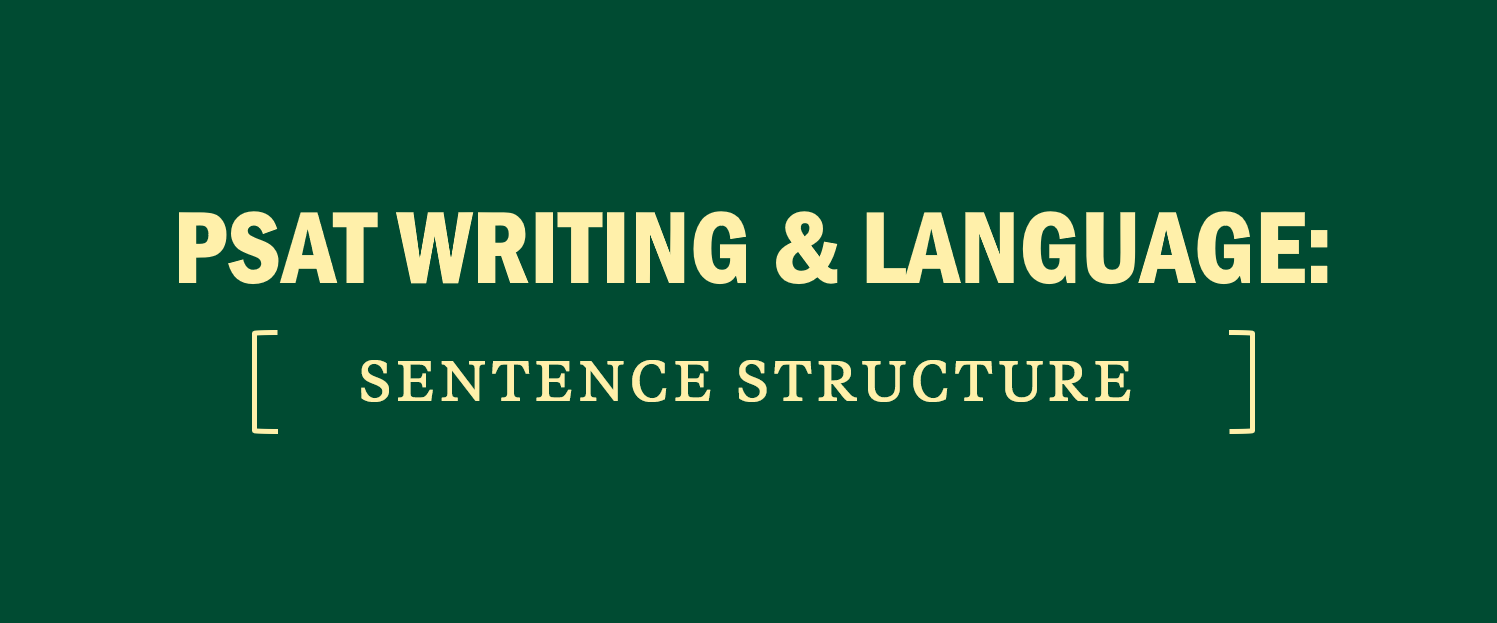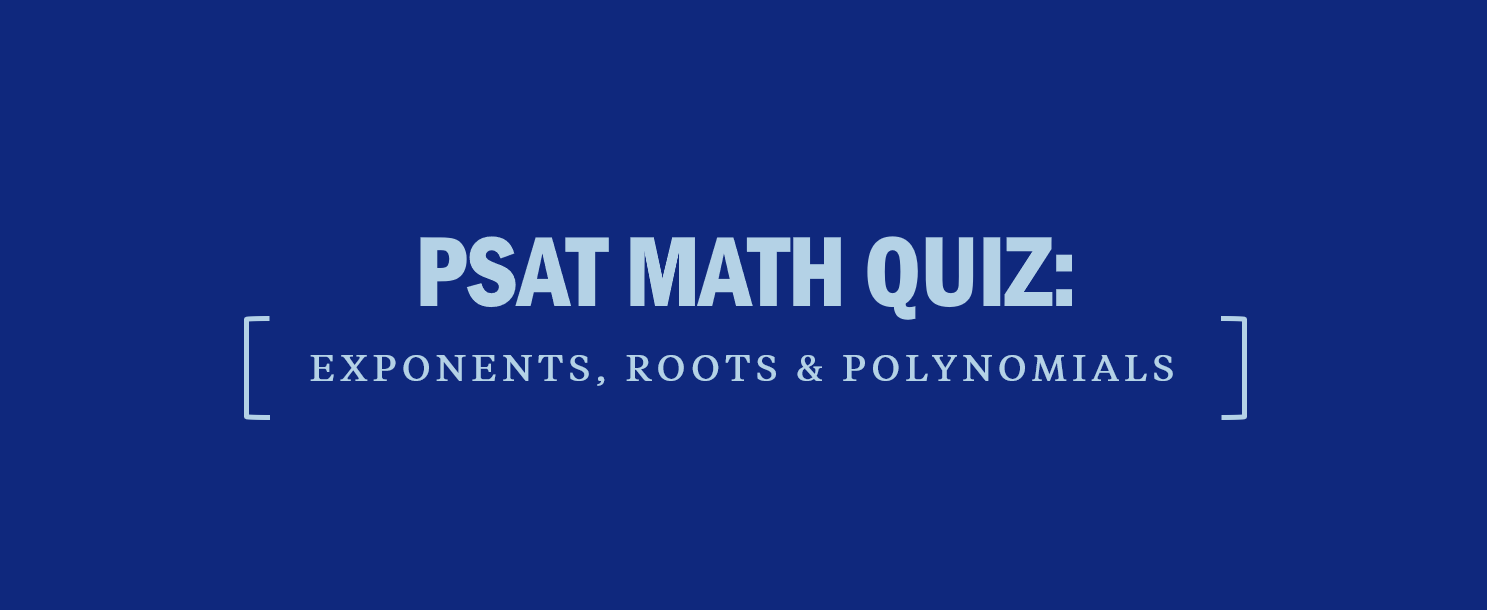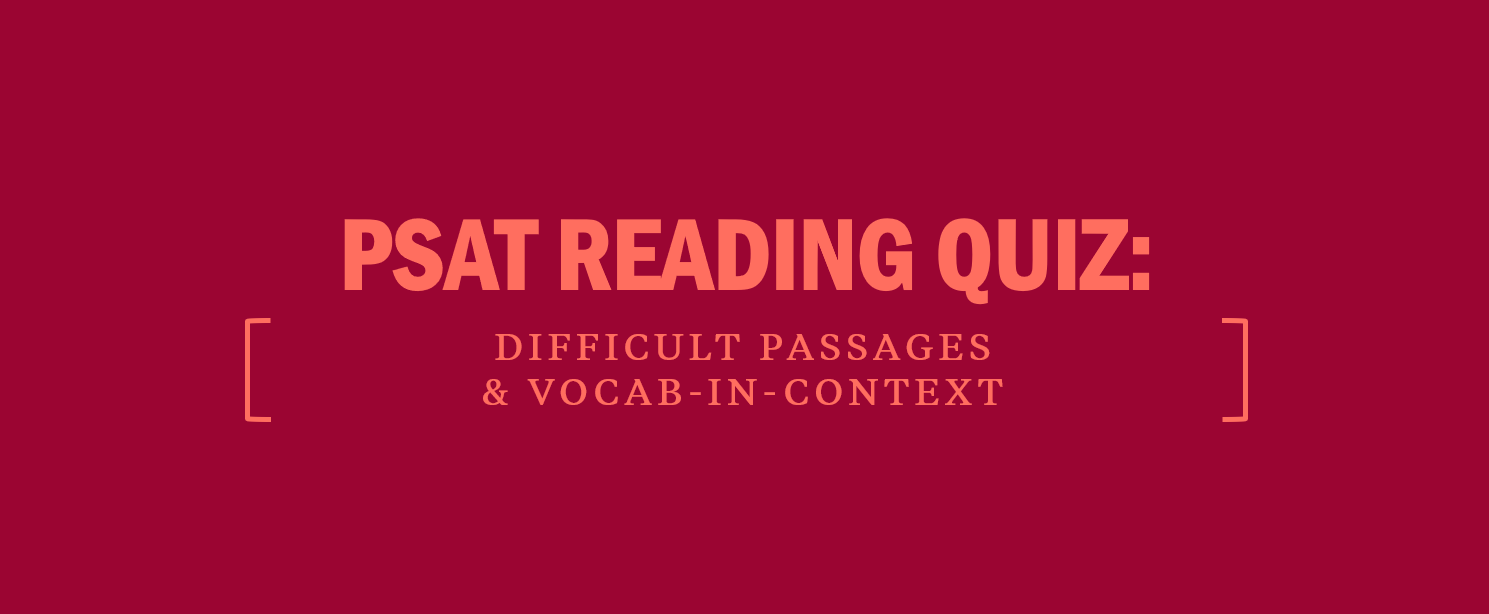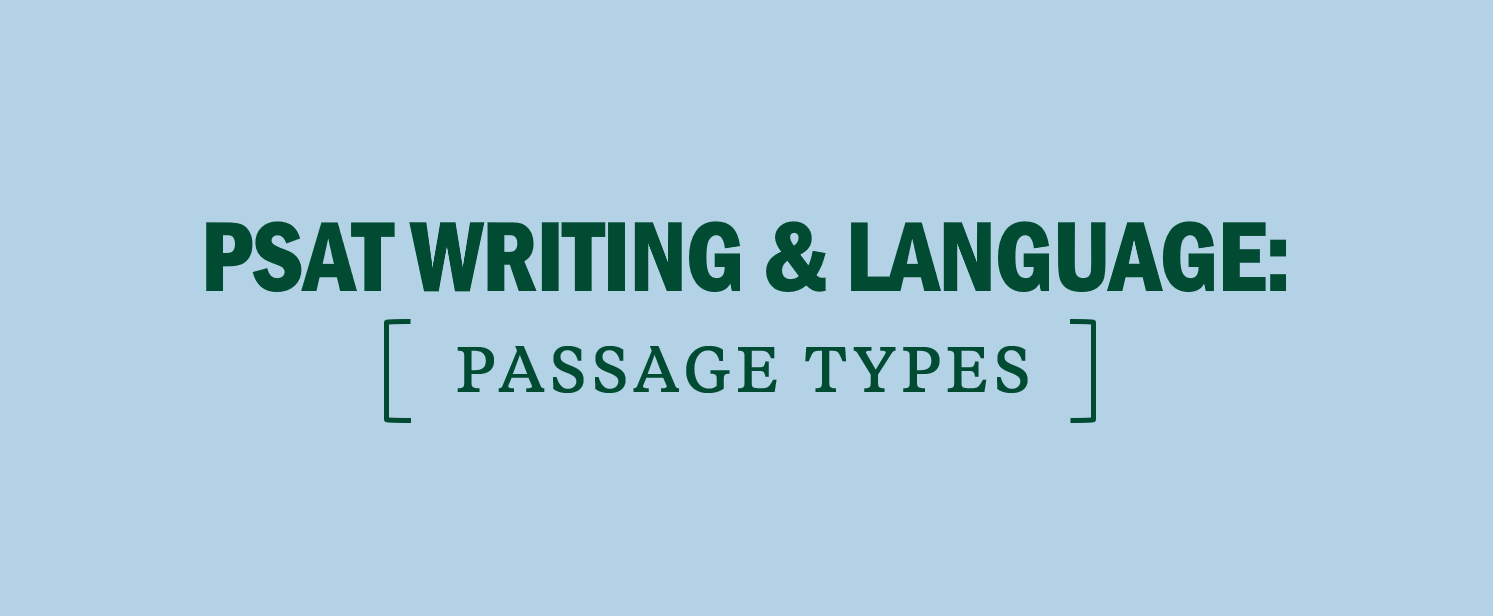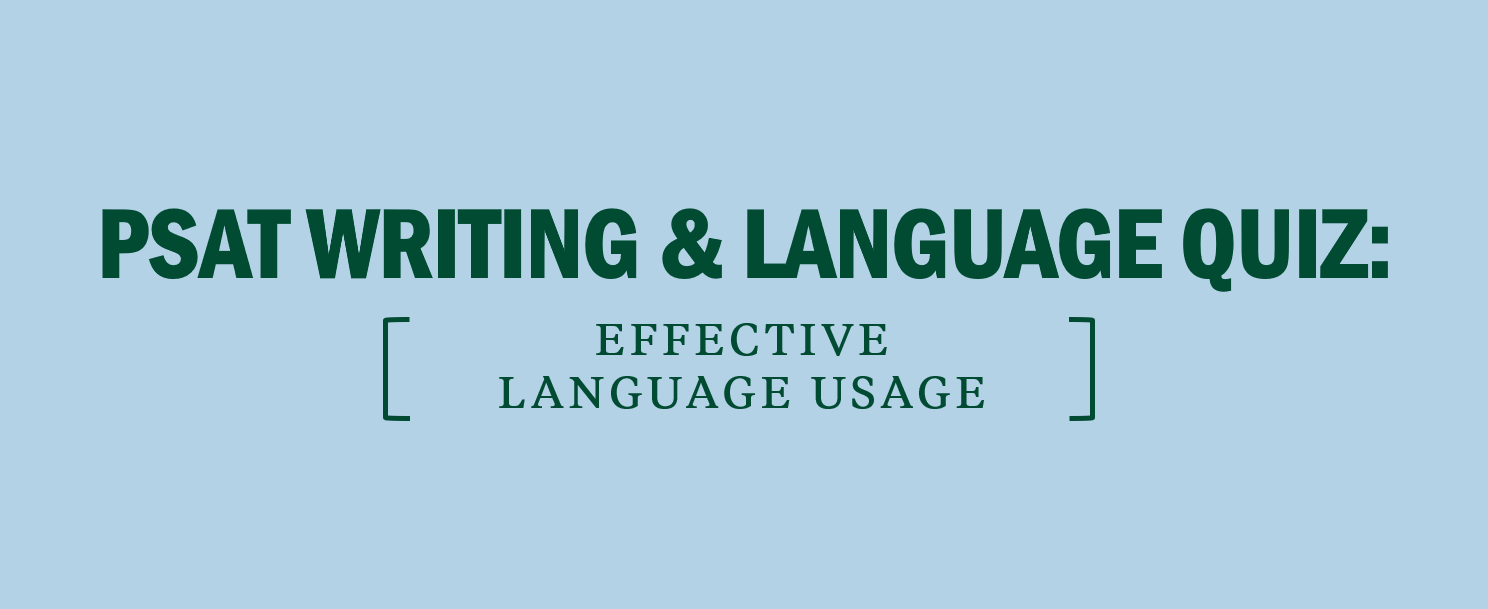Quiz: How would you do on the Digital PSAT?
Your PSAT score is more than a prediction of your ACT or SAT score; it can also qualify you for a National Merit Scholarship. Take this quiz to find out how you might score on the different sections of the Digital PSAT.
Answer 1
C: If a linear equation has no solution, the variables cancel out, leaving two numbers that are not equal to each other. Start by simplifying the left side of the equation:
36 + 3(4x – 9) = c(2x + 1) + 25
36 + 12x – 27 = c(2x + 1) + 25
The variable term on the left is 12x. Because the variable terms must cancel, the right side of the equation must also have a 12x, so it must be that c = 6
Answer 2
B:
Pay careful attention to the units. You need to convert all of the dimensions to inches, then set up and solve a proportion. There 12 inches in 1 foot, so the real plane’s length is (220 x 12) + 6 = 2,640 + 6 = 2,646 inches; the length of the wingspan on the real plane is 176.5 x 12 = 2,118 inches; the length of the amusement park ride is 36 feet, 9 inches or 441 inches; the length of the wingspan on the ride is unknown. Set up a proportion. Try writing the proportion in words first.
(real wingspan / real length) = (ride wingspan / ride length)
(2,118 / 2,646) = ( x / 441)
441 x 2118 = 2646(x)
934,038 = 2,646x
353 = x
The ride’s wingspan should be 353 inches, which is equal to 29 feet, 5 inches.
Answer 3
B: There is only one variable here, so solve each inequality for a and then eliminate incorrect answer choices.
First inequality: a + 2 > 5, so a > 3.
This means you can eliminate A because 3 is not greater than itself. Second inequality: a − 4 < 1, so a < 5.
This means you can eliminate C and D because neither 5 nor 6 is less than 5. The number 4 is the only answer choice that is both greater than 3 and less than 5.
Answer 4
B: On the Main Idea question above, use the main idea identified in the first sentence of the passage to make a prediction of the correct answer in your own words: houses could be ordered from Sears by mail. This prediction matches (B), which also addresses the emphasis in the rest of the passage on the variety of available houses. Choices (A) and (C) make claims that are not supported by the passage, and choice (D) mentions just one detail from the passage rather than summarizing the big picture of the passage.
Answer 5
D: First, eliminate choice (A), “they,” as the “Sears Catalog” is singular and this choice is a plural pronoun. Next, consider the singular pronoun “this” in choice (B). In context, this pronoun is ambiguous, as the first sentence refers to both the “Sears Catalog” and “a local store”; the blank must refer to the “Sears Catalog,” but “a local store” is closer to the blank. Thus, eliminate (B), as well as the ambiguous pronoun in (C). Choice (D) clarifies that the catalog offered a big selection.
Answer 6
Difficulty: Medium
Category: Information and Ideas
Getting to the Answer (D): The question stem asks which choice logically flows from the ideas in the passage. The sentence with the blank identifies that the correct answer will be something that is implied if the cave artifacts were made by humans, so look for details about these artifacts as you read the passage. The previous sentence states that Ardelean dated the tool artifacts to at least 18,000 years ago. Determine why this dating is significant. The contrast transition “However” indicates that this date contrasts with other dates; the previous sentences explain that human occupation in the Americas was previously thought to have started only 13,000 years ago. With such a clear contrast word, many students would choose the predict-and-match strategy for this question. You can predict that the archeologist would imply that the new artifacts date human occupa- tion earlier than was previously thought. This matches (D).
Choice (A) can be eliminated because it is out of scope; the passage does not address how advanced the stone tools were. Choices (B) and (C) can be eliminated because they distort the details in the passage. For (B), the passage states that Ardelean dated the stone tools from Mexico as relatively old, but the passage never suggests that he contests the dating of other archeological artifacts. For (C), the passage states that archeolo- gists assumed humans couldn’t go past glaciers earlier than 13,000 years ago, but it never suggests that Ardelean thinks glaciers were “impassable”; if anything, his older dating of artifacts suggests that humans got around the glaciers.
Answer 7
Difficulty: Hard
Category: Craft and Structure
Getting to the Answer (B): The question stem asks for the function of an underlined sentence, so think about the structure of the passage as you read. Ask yourself, Why did the author include this sentence? The passage begins by discussing the setting of the story, with a valley described as “one of the quietest places in the whole world.” The underlined sentence gives additional details about the valley (its murmuring brook, its occasional bird noises) that support the claim that it is quiet. The remaining sentences introduce a character (the narrator) into the quiet setting that has been described. While some students might predict an answer here, others might choose the elimination strategy. If you would choose the latter, evaluate the answer choices with the structure you just found in mind. Eliminate (A), as the character is not described as quiet; rather, he fires a loud gun. Choice (B) is correct; the underlined sentence uses details to elaborate on the description of the setting as quiet. Choice (C) is opposite; the underlined sentence is not a counterpoint, but rather supporting evidence, for the claim that the valley is quiet. Eliminate (D) as well, since the underlined sentence does not imply conflict, just a quiet setting.
Answer 8
Difficulty: Medium
Category: Expression of Ideas
Getting to the Answer (B): The question stem asks for the most logical transition, so as you read the passage, identify what ideas are being connected by the transition. The first idea, located in the sentence before the transition, is that Wilson advocated for the Treaty of Versailles. The second idea, located in the sentence with the transition, is that Congress never approved the treaty. These ideas contrast, so many students would predict that the correct answer will be a contrast transition word. This prediction matches (B), which is correct. Choices (A) and (C) are incorrect because they are continuation transitions, while the ideas in the passage contrast. Choice (D) is incorrect because it creates an illogical cause-and-effect relationship; Congress failed to approve the treaty despite, not due to, Wilson’s support for it.


